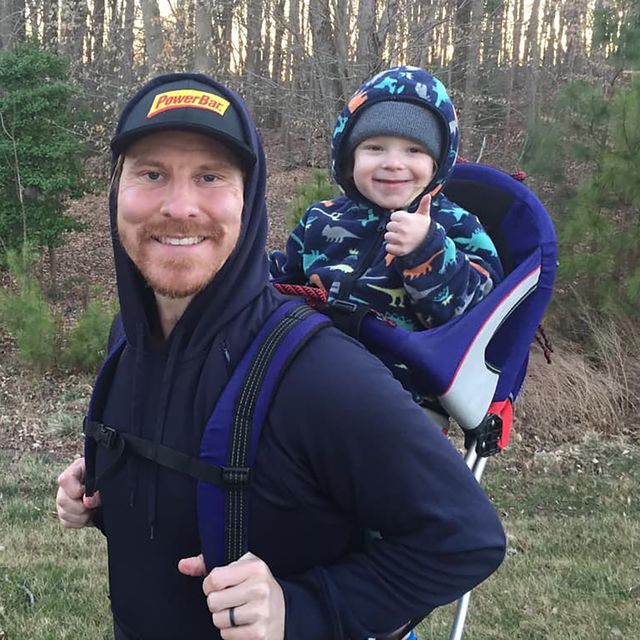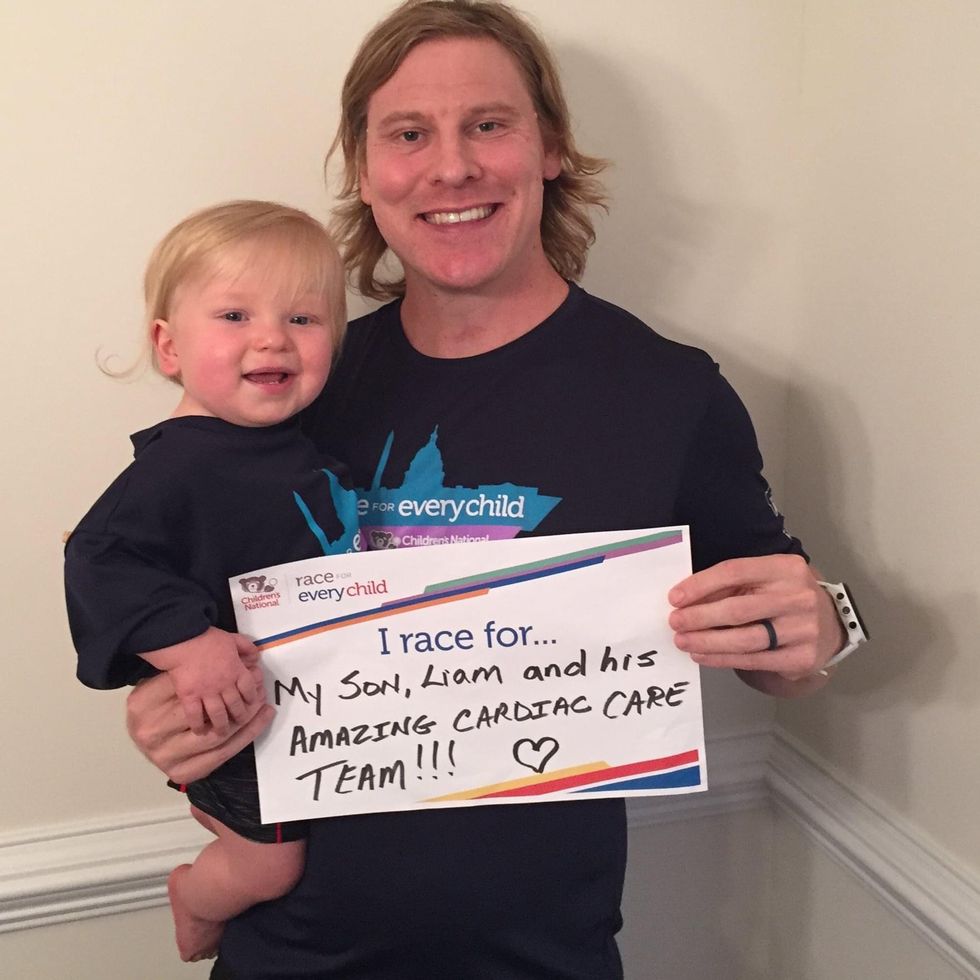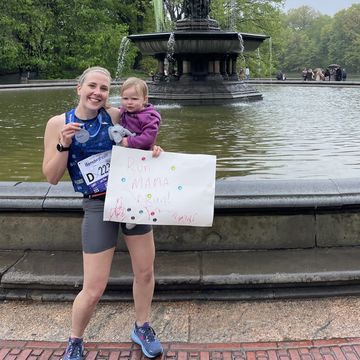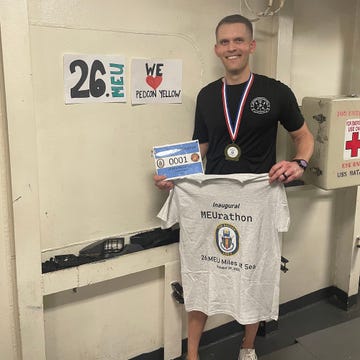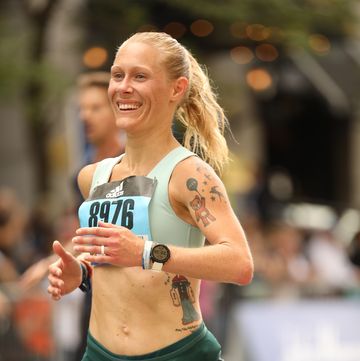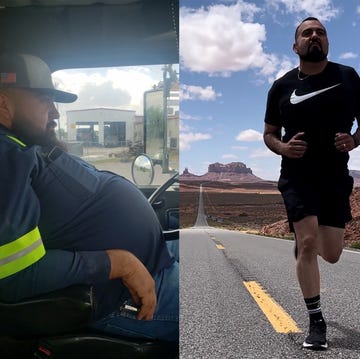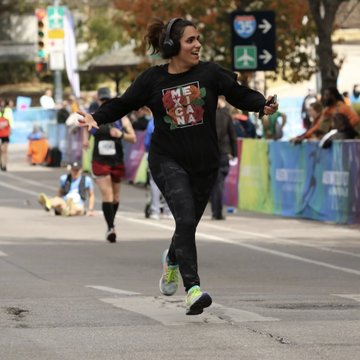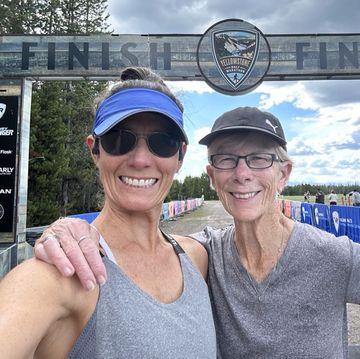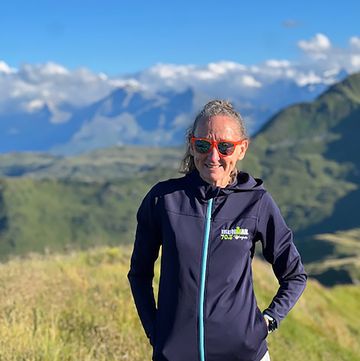Name: Brian Boyle
Age: 37
Hometown: Maryland
Occupation: Marketing and communications
Time Running: 16 years
Reason for Running: Whether it’s one mile or 100 miles, running is my time to reflect, and appreciate every breath, heartbeat, and mile along the journey, and to celebrate the gift of life.
I’ve always enjoyed running and I started competing in 6th grade on the track and field team for my middle school. I loved being a part of a team atmosphere, and as I entered high school, I still wanted to run, but my coaches preferred that I throw shot put and discus because I was doing a lot of strength training and some powerlifting at the time. I enjoyed the throwing events, but had an interest in running over the years, and would ask my coach to put me in a sprint relay or two throughout the season.
Outside of track, I also started swimming competitively when I was 15, and when I wasn’t at swim practice, I was usually jogging.
Growing up, I also had a dream of wanting to complete an Ironman triathlon. I saw the Hawaii Ironman on television when I was 5 years old and was inspired by the athleticism and inspirational stories of the athletes.
Unfortunately, one month after I graduated high school in July 2004, I was involved in a near-fatal car accident. The injuries were catastrophic: my heart went across my chest, I sustained shattered ribs, pelvis, left clavicle, and severe nerve damage to my left shoulder. Nearly every major organ in my body was damaged, failed, or lacerated. I also had a concussion from the impact of the crash and experienced 60 percent blood loss.
The EMS and rescue workers who got me out of the vehicle were later given awards for their work. I was then flown by a medevac to the hospital, and my trauma team explained to my parents that it would be a miracle if I survived the first 24 hours. Well, I did and I would spend the next two months in a coma, on life support. I was brought back to life eight times during the 14 major operations I had over that time.
When I came out of the coma, I had lost 100 pounds, and had to learn how to talk, eat, drink, tie my shoes, comb my hair, and brush my teeth all over again. The thought of walking was just that—only a thought—due to the damage to my crushed pelvis.
However, with help from my medical team, I was slowly able to stand, with restraint belts around my waist while being held up by physical therapists on each side. I then progressed to standing on my own with a walker, then a cane, and then shuffling my feet a few inches at a time across the floor to learn how to walk again.
After months of intense physical therapy, I was able to walk around my local high school track, which was a triumphant day. A few months after that, I was able to jog a mile around the track, and I kept progressing from there.
A year after leaving the ICU in 2005, I finally started college, and joined the swim team (even though I was just doggy paddling or doing light kicking with the kick board once or twice a week for 30-minute sessions.) Then two years later, in 2007, I was able to live my dream of crossing the finish line of the Hawaii Ironman triathlon, and also complete my healing process.
It was a team effort to save my life that terrible day and help me heal 100 percent from the EMTs, medevac team, pilots, surgeons, nurses, and physical therapists. So crossing the finish line at Ironman was my way of saying thank you to everyone who was a part of my journey and encouraging me every single step along the way.
Completing that race inspired me to continue racing, and eventually get into trail running, which I love.
Today, though, I run for my son, Liam. My wife, Pam, and I have two amazing children, Clara, who is 6 years old, and Liam, who is 4 years old. My children are my absolute world and they inspire me on a daily basis. My son, Liam, has a very critical form of congenital heart disease (CHD). CHD is a defect in the heart’s structure that’s present at birth, affecting nearly 40,000 babies each year in the U.S alone. His oxygen levels will always be lower than normal, so he gets dusky in color when he gets upset or cries.
Since birth, he’s undergone four major open heart surgeries, and other related procedures. His surgeries are palliative—not cures. He also has heterotaxy, which is when the organs are not in the correct location of the body, which can affect their ability to properly function. Liam’s lungs and liver are impacted, and he does not have a spleen so he is at higher risk for infections.
As Liam grows, he will require more cardiac operations. There is currently no cure for his type of congenital heart disease, and due to the cardiac defects that he has, there is an increased risk to liver dysfunction in the future.
We have been prepared that in Liam’s 20s or 30s, there’s a possibility he will need a heart transplant. This thought is very difficult for us as a family, but we hold onto the hope that medicine and surgical innovation will continue to advance over the next few years.
In Liam’s honor, I will be running the Grindstone 100K this year in Virginia. It is also my hope to raise awareness of congenital heart disease.
It’s been nine months since Liam’s most recent open heart surgery, and he is getting stronger each month. Seeing his improvement, and watching what he’s overcome has inspired and filled my heart with such gratitude. I’m going to get to that finish line for my son to celebrate his recovery!
I’m grateful for my family, and the second chance at life I was given after my near-fatal car accident, so having the opportunity to make it to the starting line of these events is a gift.
With Liam’s operations, running has been therapeutic for me—it’s a time for quiet reflection, and observing what my son has been able to overcome in his young life. It’s also a time to find inspiration on how I can help him, my family, and other families who are going through this journey.
Anxiety, depression, and PTSD can become overwhelming leading up to my son’s open-heart surgeries, but running allows me a physical and mental release from the stress.
When I get out there on the trails, I’m able to confront the concerns and worries that I have. Running has always been joyful, and these days it’s also my way to reduce stress, and inspire my children to see that when you work hard and set goals, you can achieve anything. Running is also my way to raise awareness on congenital heart disease and do all I can to help find a cure for the type of cardiac defects that my son, and many other heart warriors have.
These tips have made my running journey a success:
1. Stay consistent
Each week I strive to hit a certain mileage that safely builds off the previous weeks, which then helps build a solid foundation for future training. The more consistent I am with mileage, nutrition, and pace, the better I feel at the starting line. I break larger goals into smaller, more achievable goals that over time help build confidence in my training. Over time, small goals can become big wins during the season!
2. Rest and recover
In my first few years of running, I felt inspired to get out the door and train as much as possible each week. However, as I’ve been running more over the years, I have come to realize how important rest and recovery are after each training session. Having high mileage weeks is certainly an integral part of the training plan, but after every three to four weeks, I’ve found that taking the time to decrease the mileage during that “recovery” week helps keep me healthy and well rested.
3. Mix up your training and racing
I’m a bit of a hybrid endurance athlete, and I love to race in a variety of long-distance events, from marathons, to 100 mile ultramarathons. I have multiple goals in each discipline, and depending on the time of year and overall goals for the season, I’ll specifically focus on the upcoming race and how I can best prepare for it. This keeps it interesting! My weekly training plan includes swimming, biking, running, and strength training. The variety of the training and different goals has kept me feeling fresh and motivated.
Brian’s Must-Have Gear
→ PowerGel Green Apple: I’ve included Powerbar products in my training and racing since I started competing in sports in middle school, and they are a training staple of mine that I use every single day. During a training run or in the middle of a 100-miler, this is a delicious way to get much needed energy to keep running strong.
→ Nike Kiger 9 Men’s Running Shoe: These are my favorite trail running shoes because they are just the right amount of weight with optimum cushion. The way the shoe is designed, my feet feel secure, mile after mile, and I’m able to get an efficient and smooth foot strike with quick turnover. I also love the style and color range of this shoe, and they have the right amount of grip on technical terrain.
→Inner Armour Sports Nutrition Whey Protein Matrix: With the amount of training I do each week, recovery is essential in order to make the most of the next training session right around the corner. I’ve found great success in this protein formula because it tastes great, it helps hold onto the lean muscle mass when training, and aids the recovery process so I feel refreshed the next day when I get back out on the trails.
